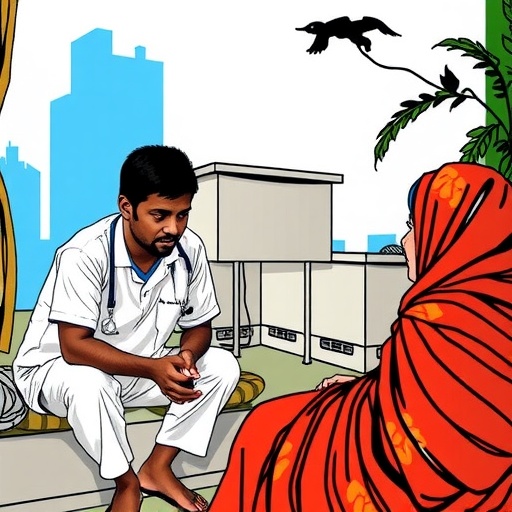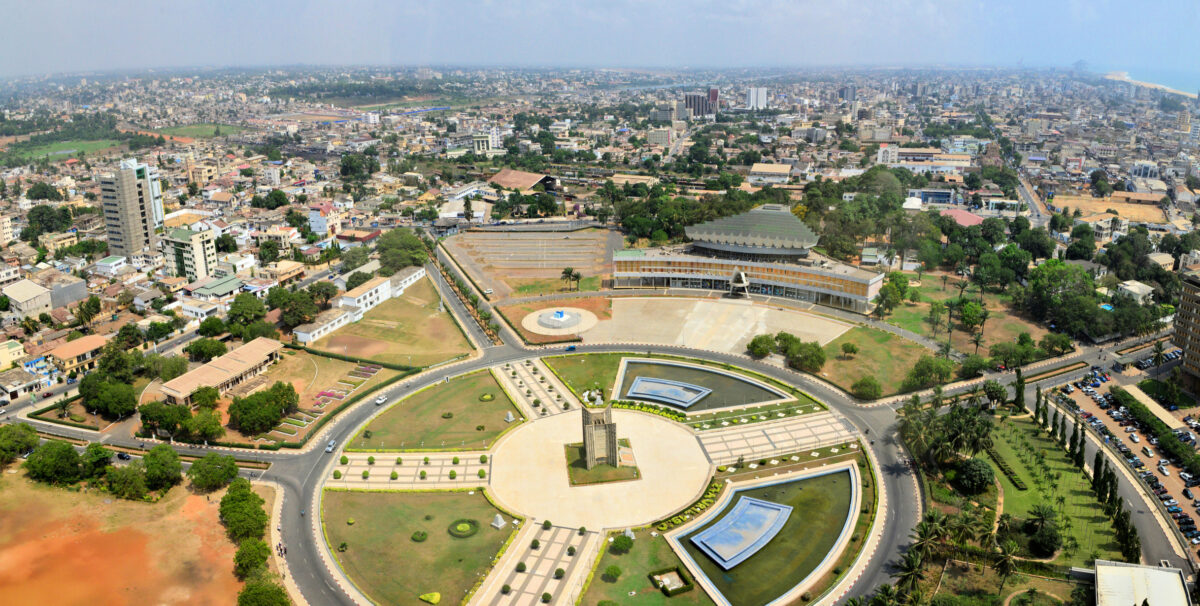National Bank of Ethiopia Issues Stern Warning to Illegal Money Transmitters Operating in UAE – Addis Insight

Report on Ethiopia’s Measures Against Illicit Financial Flows and Their Impact on Sustainable Development Goals
Executive Summary
The National Bank of Ethiopia (NBE) has initiated decisive measures against unauthorized international money transmitters, particularly those operating from the United Arab Emirates. These illicit financial activities are identified as a primary driver of black market expansion, which severely undermines Ethiopia’s economic stability and obstructs progress toward key Sustainable Development Goals (SDGs), notably SDG 8 (Decent Work and Economic Growth), SDG 10 (Reduced Inequalities), and SDG 16 (Peace, Justice and Strong Institutions).
Threats to Economic Stability and SDG 8
The proliferation of informal currency trading networks poses a direct threat to Ethiopia’s pursuit of sustainable economic growth as outlined in SDG 8. By creating a parallel foreign exchange market, these operations destabilize the formal financial system and impede national development efforts.
- Economic Destabilization: Illicit flows exacerbate the gap between official and black-market exchange rates, fueling currency speculation and inflation.
- Undermining Formal Economy: NBE Governor Ato Mamo Mehret stated that overseas entities are “deliberately working to distort our financial system,” diverting critical resources away from the formal economy needed for investment and job creation.
- Macroeconomic Instability: The activities challenge policymakers’ ability to manage exchange rates and maintain the economic discipline essential for long-term growth.
Strengthening Institutions and Combating Illicit Flows in Line with SDG 16
The NBE’s response aligns with SDG 16, which calls for building effective, accountable, and inclusive institutions and, under Target 16.4, significantly reducing illicit financial flows. The central bank’s actions are designed to reinforce the rule of law within the financial sector.
Planned Countermeasures
- Enforcement Actions: The NBE is prepared to implement stringent measures, including the freezing or confiscation of funds transmitted through illegal channels.
- Domestic Compliance: A formal call has been issued for all domestic businesses and individuals to transition their financial transactions to the formal banking sector, ceasing participation in the informal market.
- Systemic Reforms: The crackdown is part of a broader strategy to enhance transparency, rebuild foreign currency reserves, and restore confidence in the national financial system, supported by reforms like foreign exchange auctions.
Addressing Inequalities and Fostering Global Partnerships (SDG 10 & SDG 17)
The black market disproportionately impacts the most vulnerable populations, exacerbating economic disparities and hindering progress on SDG 10 (Reduced Inequalities). By formalizing the economy, the NBE aims to create a more equitable financial system. Furthermore, the central bank recognizes that this challenge requires international collaboration, reflecting the principles of SDG 17 (Partnerships for the Goals).
- International Cooperation: The NBE has committed to working in coordination with international financial regulators and partners to track and halt illicit financial activities at their source.
- Restoring Confidence: These combined domestic and international efforts are crucial for liberalizing the forex market and reducing reliance on informal systems that undercut Ethiopia’s financial recovery and sustainable development agenda.
Analysis of SDGs in the Article
1. Which SDGs are addressed or connected to the issues highlighted in the article?
- SDG 8: Decent Work and Economic Growth
- SDG 10: Reduced Inequalities
- SDG 16: Peace, Justice and Strong Institutions
- SDG 17: Partnerships for the Goals
2. What specific targets under those SDGs can be identified based on the article’s content?
SDG 8: Decent Work and Economic Growth
- Target 8.1: Sustain per capita economic growth. The article highlights that illegal financial operations are “undermining Ethiopia’s economy,” contributing to “inflation, and the broader macroeconomic instability.” The NBE’s actions are aimed at stabilizing the economy, which is a prerequisite for sustainable growth.
- Target 8.10: Strengthen the capacity of domestic financial institutions to encourage and expand access to banking, insurance and financial services for all. The article explicitly mentions the NBE’s call for the “business community to immediately transition their operations into the formal banking sector” and its broader goal to “restore confidence in the formal financial sector.” This directly supports the strengthening and utilization of domestic financial institutions.
SDG 10: Reduced Inequalities
- Target 10.c: By 2030, reduce to less than 3 per cent the transaction costs of migrant remittances and eliminate remittance corridors with costs higher than 5 per cent. The article discusses “unauthorized money transmitters” and “illegal remittance and currency trade networks.” These informal channels often exist because formal channels are expensive or inaccessible. The crackdown on these illegal networks is a step towards formalizing and regulating remittance flows, which is necessary to address their costs.
SDG 16: Peace, Justice and Strong Institutions
- Target 16.4: Significantly reduce illicit financial and arms flows, strengthen the recovery and return of stolen assets and combat all forms of organized crime. The central theme of the article is the NBE’s effort to combat the “illicit flow of money through unregistered channels” and “illegal financial operations.” The stated measure to implement the “freezing or confiscation of illegally transmitted funds” directly aligns with strengthening the recovery of assets.
- Target 16.5: Substantially reduce corruption and bribery in all their forms. The existence of “underground networks” and “parallel currency markets” implies a system operating outside legal and transparent frameworks, which is often enabled by corruption. The NBE’s push to “enhance transparency” is a direct countermeasure to the conditions that allow such illicit activities to thrive.
SDG 17: Partnerships for the Goals
- Target 17.16: Enhance the global partnership for sustainable development. The article clearly states the NBE’s intention to “work in coordination with international financial regulators and partners to track and stop such activities at the source,” demonstrating a commitment to international partnership to solve a domestic economic problem.
3. Are there any indicators mentioned or implied in the article that can be used to measure progress towards the identified targets?
Indicators for SDG 8
- Gap between official and black-market exchange rates: The article mentions a “widening gap between official and black-market rates” as a key problem. A reduction in this gap would be a direct indicator of progress towards economic stability (Target 8.1).
- Use of formal banking channels vs. informal systems: The NBE’s call for businesses to “fully utilize the formal banking system” implies that the proportion of transactions occurring within the formal sector is a key metric. An increase in the use of formal channels would indicate progress towards Target 8.10.
Indicators for SDG 10
- Prevalence of illegal remittance networks: The article identifies a “growing trend of illegal financial operations” and the existence of “illegal remittance and currency trade networks.” The scale and activity level of these networks serve as a qualitative indicator of the challenges in achieving a formalized, low-cost remittance system as envisioned in Target 10.c.
Indicators for SDG 16
- Volume of illicit financial flows: While not quantified, the “illicit flow of money” is the central problem. Efforts by the NBE to track, freeze, or confiscate these funds would provide data points to measure the reduction of these flows, directly relating to Indicator 16.4.1 (Total value of inward and outward illicit financial flows).
- Value of confiscated funds: The NBE’s plan for “freezing or confiscation of illegally transmitted funds” can be measured. The total value of assets recovered would be a direct indicator of progress in combating illicit financial flows (Target 16.4).
Indicators for SDG 17
- Number of international cooperation agreements: The NBE’s stated plan to “work in coordination with international financial regulators and partners” implies that the establishment of formal partnerships or agreements would be an indicator of progress towards Target 17.16.
4. SDGs, Targets, and Indicators Summary
| SDGs | Targets | Indicators (Mentioned or Implied in the Article) |
|---|---|---|
| SDG 8: Decent Work and Economic Growth | 8.1: Sustain per capita economic growth. 8.10: Strengthen domestic financial institutions. |
– Gap between official and black-market exchange rates. – Proportion of financial transactions occurring in the formal banking sector. |
| SDG 10: Reduced Inequalities | 10.c: Reduce remittance transaction costs. | – Existence and scale of “illegal remittance and currency trade networks.” |
| SDG 16: Peace, Justice and Strong Institutions | 16.4: Significantly reduce illicit financial flows. 16.5: Substantially reduce corruption. |
– Volume of “illicit flow of money.” – Value of “illegally transmitted funds” that are frozen or confiscated. |
| SDG 17: Partnerships for the Goals | 17.16: Enhance the global partnership for sustainable development. | – Establishment of coordination efforts with “international financial regulators and partners.” |
Source: addisinsight.net

What is Your Reaction?
 Like
0
Like
0
 Dislike
0
Dislike
0
 Love
0
Love
0
 Funny
0
Funny
0
 Angry
0
Angry
0
 Sad
0
Sad
0
 Wow
0
Wow
0


-1920w.png?#)





































































